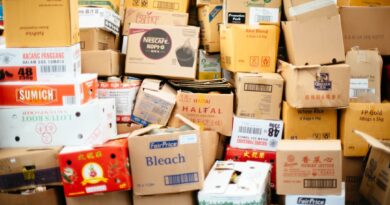A path to the sustainability approach for the plastic tubes
A tube is an ecological form of packaging, and tube manufacturers are dedicated to developing more and more sustainable options for lines and tube components.
Tubes of all types have been proven recyclable in different waste streams, although the collection of tubes is not widely acknowledged in North America.
When recycled in an aluminum waste stream, aluminum tubes can be infinitely recycled without losing quality, and 95 percent of the energy stored in the metal is retained.
Plastic, Injection Molded, and laminate tubes can recycle, either for usage in other plastic products or incinerated with the energy recovery. These tubes are typically made up of different low or high-density polyethylene or polypropylene resins and, in the option of laminate tubes, an aluminum foil layer.
What is Sustainability?
Sustainability is the practice of creating or managing resources in a way that does not threaten human well-being over the long term. It is about conserving natural resources, reducing waste, and upholding environmental laws. It can achieve sustainability through various measures, including reducing consumption, increasing efficiency, and investing in renewable resources.
What are the Factors That Determine Sustainability?
The factors that determine the sustainability of cosmetic tubes are production methods, ingredient sourcing, end-of-life handling, and environmental impact.
The tube enterprise is in a state of evolution. Customer goods businesses are moving many mass-marketed developments from packaging in extruded plastic tubes to stand-up tubes produced with all-plastic laminates or Injection Molded. Stand-up tubes can eliminate the external corrugate carton commonly used to package the tube. This change has considerably reduced the amount of material used in the tubes. Technical advances have reduced tube wall thicknesses while maintaining barrier properties to protect the product.
Production Methods: Cosmetic tubes must be produced in a way that does not damage the environment. It means using sustainable resources such as recycled materials or energy-efficient processes. Sourcing Ingredients: Cosmetic tubes must be made with sustainable ingredients. It means finding ingredients that have a low impact on the environment and human health. End-of-Life Handling: Cosmetic tubes are handled in a way that does not damage the environment or human health. It means being recycled if possible and avoided if not possible. Environmental Impact: Cosmetic tubes have an ecological impact when produced and used. This impact can include water usage, energy use, land use, and waste disposal.
Can Plastic Tubes Be Sustainable?
There is a growing concern over the sustainability of cosmetic products. Many of these products are made with synthetic materials that may not be able to be recycled or reused. These materials can end up in landfills, where they can create environmental problems. Some companies are working to find more sustainable methods of producing cosmetics, and some are using natural ingredients. It is still early in the process, but there is hope that cosmetics will become more sustainable in the future.
Cosmetics are not inherently wrong, but they can be harmful if not sustainable. The ingredients in cosmetics can be detrimental to the environment, and companies must be responsible when choosing these ingredients. There is hope that cosmetic tubes will become more sustainable in the future. The packaging for cosmetics should be recyclable, and the elements should be environmentally friendly. If companies take these steps, it will help make cosmetics more sustainable.
The answer to this question depends on how tubes are produced and used. If they are made using sustainable methods, then they could be sustainable.
New growths, including Post Consumer Recycled material PCR and Green, bio-based polyethylene/polypropylene (PP, PET, and Multilayered) in tubes, contribute to the advancements in the sustainability of tubes. Tube Factories and the corroborating industries are working diligently to enhance and offer more sustainable packages.
Additionally, the Tube Council (NA) is committed as an industry association to supporting sustainable developments and working together with recycling associations to have tubes accepted in municipal waste pick-up programs.
However, if they are produced using unsustainable methods, they will not be sustainable.
There are a few different ways cosmetic tubes are produced and used. If they are made using sustainable methods, they could be sustainable.? However, if they are produced using unsustainable methods, they will not be sustainable.
The production of cosmetic tubes can be done in several different ways. Some companies use organic materials and biodegradable packaging to produce their tubes. Others use non-organic materials and traditional packaging that is not biodegradable. The way that the tubes are used also affects their sustainability. If the tubes are only used for cosmetics purposes, they may be considered sustainable; however, if the tubes are also used for other products like food.






